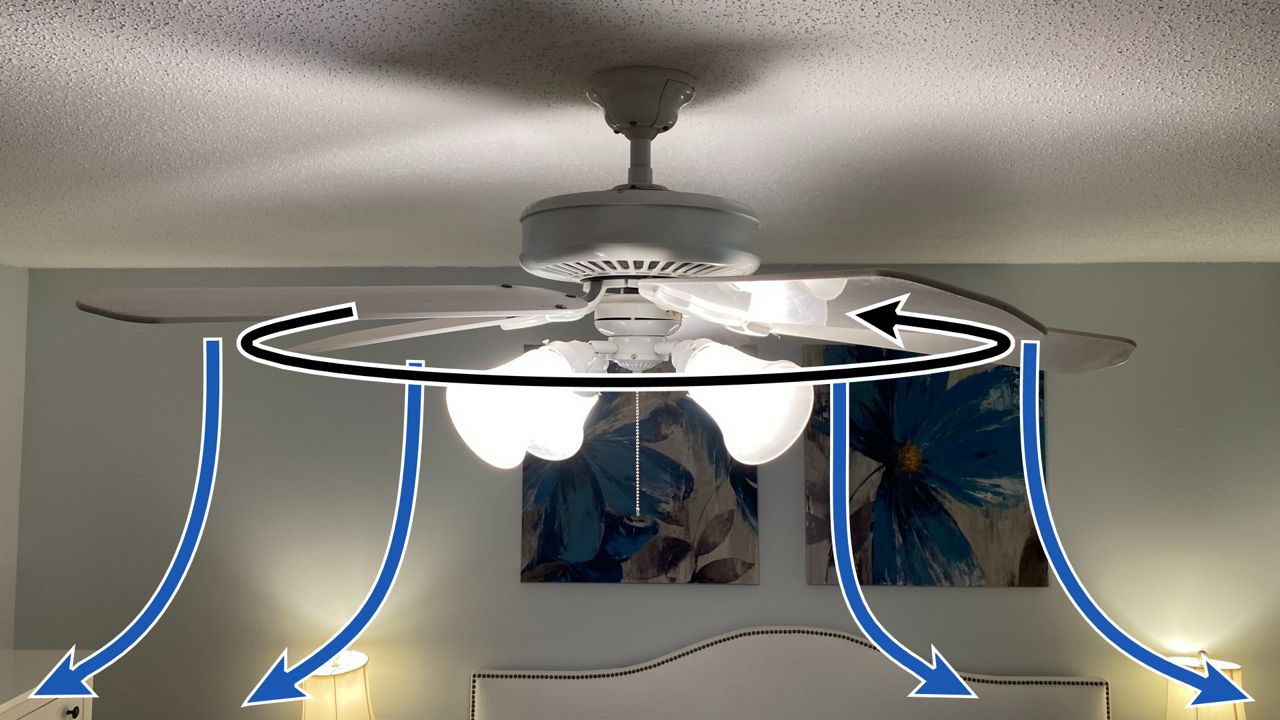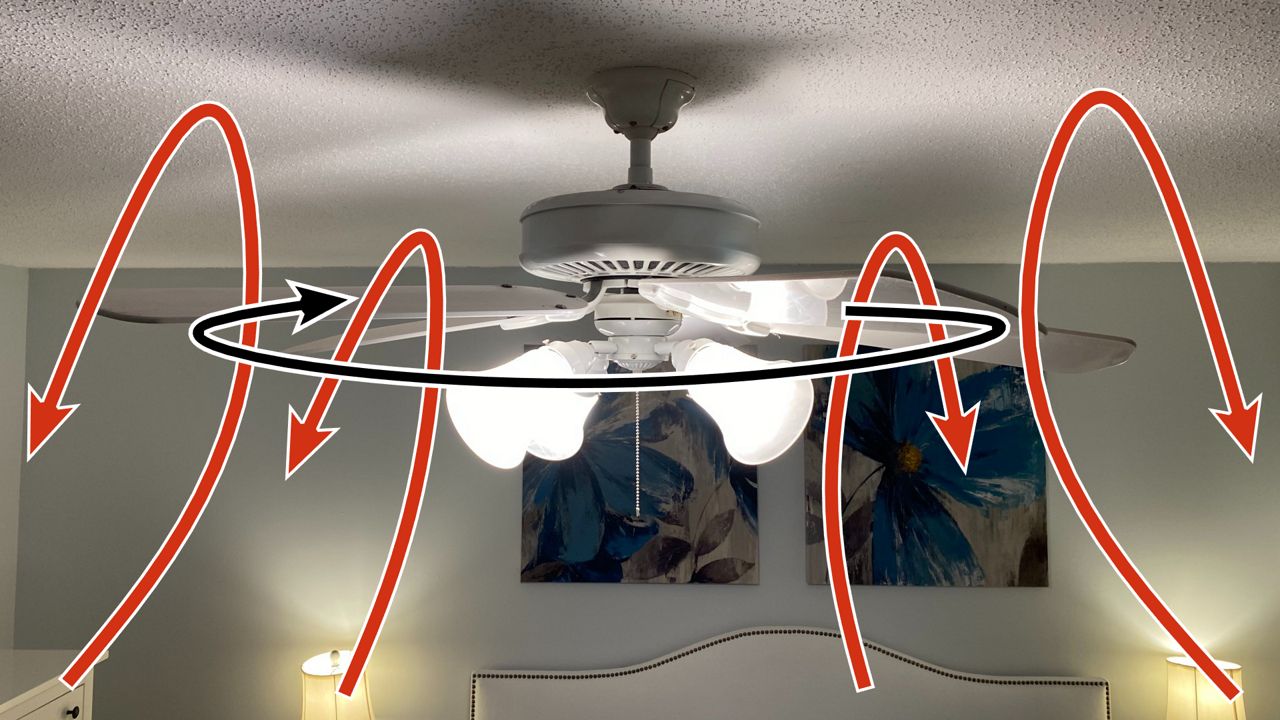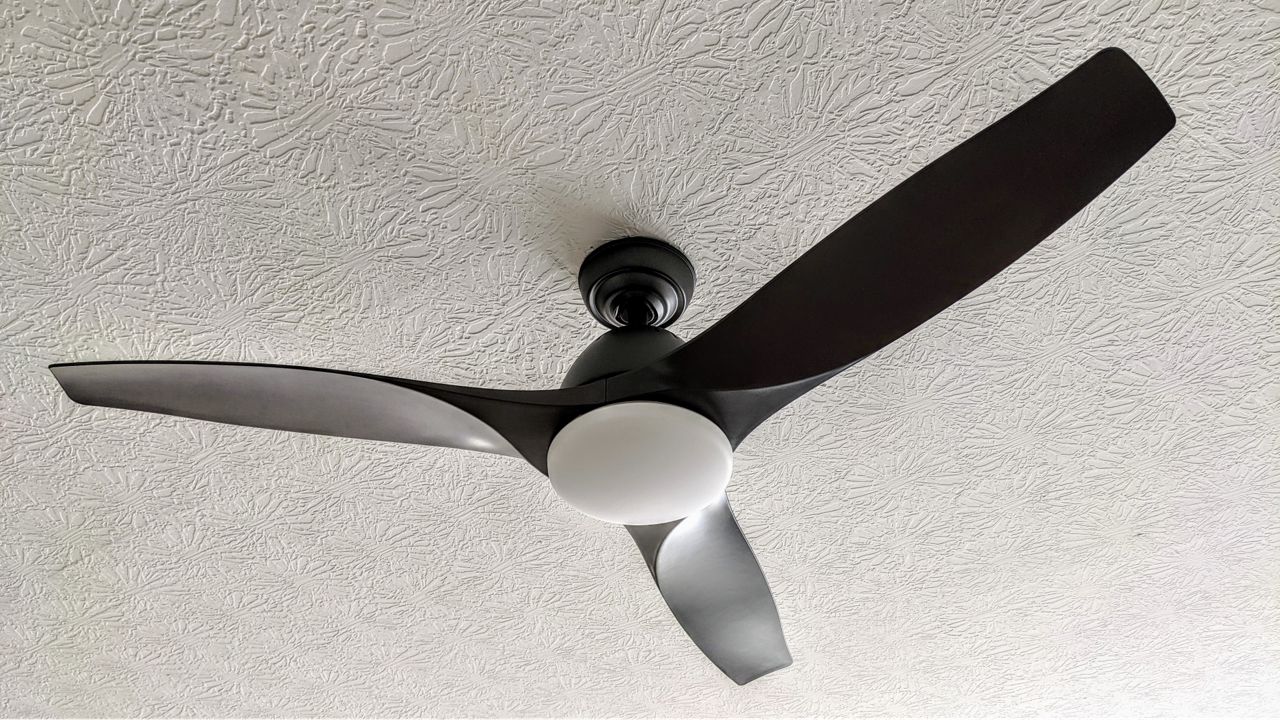If you have a ceiling fan, turn it on and look up at it. Which direction are the blades spinning? If they’re going counterclockwise, it’s time to change direction.
You may have noticed that your ceiling fan blades have slight angles. There’s a reason for that! They’re designed to move the room’s air a certain way, depending on which direction the fan is spinning.
In the summer, a counterclockwise-spinning ceiling fan will push air down and out, creating a small cooling breeze.

In the winter, a clockwise-spinning ceiling fan on low-speed will draw up the air and circulate it so that it mixes. Warm air rises, so it’ll make use of the warmer air that’s hanging above your head.

To change your fan’s spin direction, check the manual to make sure you do it correctly. Most likely, the switch is on the body of the fan fixture or inside the light globe. If your fan has a remote or wall panel, check for a fan direction button there.
This little trick of running your ceiling fan the right way can also lower your energy bill. Since your fan is returning warm air down, you may find yourself turning your thermostat down.
One other note: make sure your ceiling fan is right for the room.
Ceiling fan blades work best when they’re 10 to 12 inches below the ceiling, 7 to 9 feet above the floor and at least 18 inches away from walls.
Fans with a diameter of 44 inches or less are good for circulating rooms up to 225 square feet. Larger rooms should use larger fans, often 52 inches or bigger.
Our team of meteorologists dives deep into the science of weather and breaks down timely weather data and information. To view more weather and climate stories, check out our weather blogs section.



